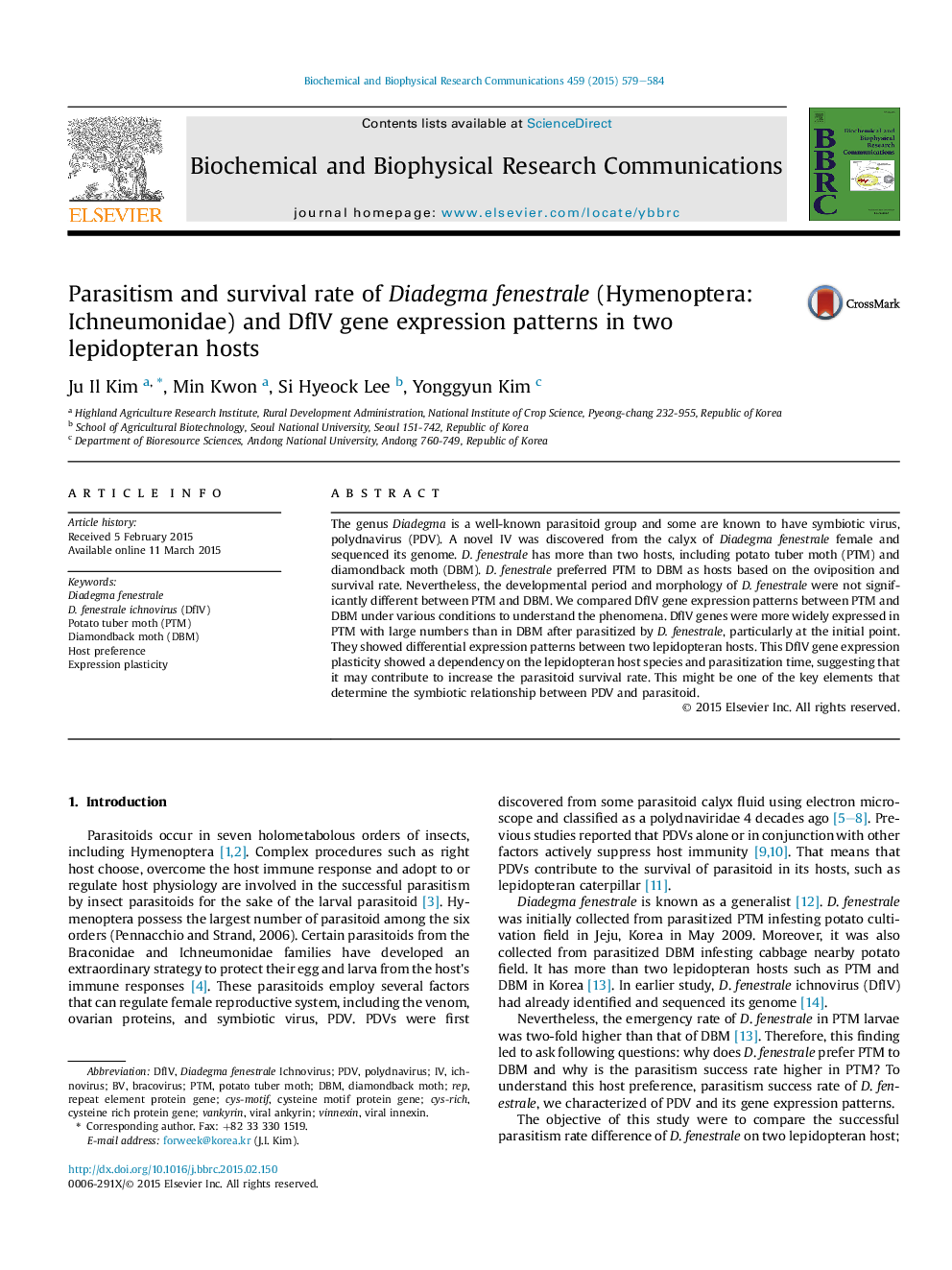| Article ID | Journal | Published Year | Pages | File Type |
|---|---|---|---|---|
| 1928221 | Biochemical and Biophysical Research Communications | 2015 | 6 Pages |
•Parasitoid, Diadegma fenestrale showed different parasitism and survival rate in two lepidopteran hosts.•A symbiotic polydnavirus, DfIV genes were differentially expressed in two hosts (PTM and DBM).•DfIV genes were more widely expressed in PTM with large numbers than in DBM after parasitization.•It may contribute to increase the parasitoid survival rate.•This might be a key elements that determine the symbiotic relationship between PDV and parasitoid.
The genus Diadegma is a well-known parasitoid group and some are known to have symbiotic virus, polydnavirus (PDV). A novel IV was discovered from the calyx of Diadegma fenestrale female and sequenced its genome. D. fenestrale has more than two hosts, including potato tuber moth (PTM) and diamondback moth (DBM). D. fenestrale preferred PTM to DBM as hosts based on the oviposition and survival rate. Nevertheless, the developmental period and morphology of D. fenestrale were not significantly different between PTM and DBM. We compared DfIV gene expression patterns between PTM and DBM under various conditions to understand the phenomena. DfIV genes were more widely expressed in PTM with large numbers than in DBM after parasitized by D. fenestrale, particularly at the initial point. They showed differential expression patterns between two lepidopteran hosts. This DfIV gene expression plasticity showed a dependency on the lepidopteran host species and parasitization time, suggesting that it may contribute to increase the parasitoid survival rate. This might be one of the key elements that determine the symbiotic relationship between PDV and parasitoid.
Graphical abstractFigure optionsDownload full-size imageDownload as PowerPoint slide
